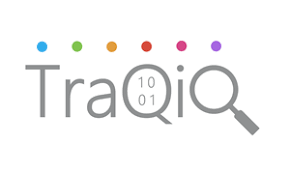How does one build out an awesome distribution engine for the company – specifically focused on Last mile delivery? Most responses would include words like “great people”, “route optimization software”, “Supply chain logistics”, etc. However, as we explore the new economy and the independent professionals who are driving the growth in these segments, there are a variety of factors to keep in mind.
Given the rapid pace of innovation in this space, there are clear elements that stand out.
People:
The human factor is critical. Getting the right people to deliver/pickup is important. They need to be able to follow instructions, be punctual, and follow instructions. In most cases, they will interact with customers, so they need to present the right image of the company.
App experience:
When you have thousands of employees, agents, and customers using the app, it is critical that it be easy to use, require minimal training and work on the opulthear (and lower-end) mobile devices. A lot of folks who are looking for entry-level jobs are not likely to have the latest iPhone. Effortless onboarding is critical – the absence of which will result in huge training and support costs.
Payments (collection/disbursement):
Will the agents be collecting/disbursing funds? This is a significant feature to consider. In addition to payments via credit/debit cards, how does the system handle payments by the unbanked? Does the customer or agent have a wallet that they can use? If they are picking up checks what sort of processes need to be followed? There is a significant amount of financial liability involved, so the system needs to be able to document every element and provide proof at every step.
Real Time data:
The need to track the agent is critical. This allows the customer to estimate the time of delivery. Geo tagging of the delivery agent at the customer site is an essential element of the “Proof of delivery”. The best scenario is all that plus watermarking of the documents that were picked up in a manner that cannot be duplicated. All elements of a winning system.
Communications:
How do people communicate – agents, customers, and system admins. In the edge cases where there are delays or weather issues, or roads are blocked, there have to be open channels of communications to ensure that everyone’s expectations are met. Ideally, this communication needs to be inside the app, and not just texting – sometimes devices have to be replaced. However, the persona on the app remains the same.
Dashboard:
How many admins do you need to manage a field agent force of 10,000 people? 1, 2, or 100. That is entirely a function of the capabilities of the dashboard that these admins are using. This is where the right AI/ML tools can be powerful in automating most functions. Human intervention should only be needed as an extreme escalation.
Analytics:
Optimizing routes, accepting business where the agents are active, using past data in predictive models – these are all elements of using analytics to build a better distribution model. In addition, there have to be multiple levels of feedback on the agents, employees and the app.
Programmability:
The right software platform has to conform to the product or service that is being offered. It is important to set up SLA’s. However, how does a system prioritize life-saving medicines being delivered over routine paperwork? Similarly, meeting delivery commitments like “Pizza in 20 minutes” have to be factored in.
There is a lot of innovation in this segment right now. A variety of companies are offering technical solutions and services. TraQiQ offers the TraQSuite product which is a category-leading solution for distribution services. Companies like Mimo offer leading-edge last mile services in India, with a nationwide network of people.



